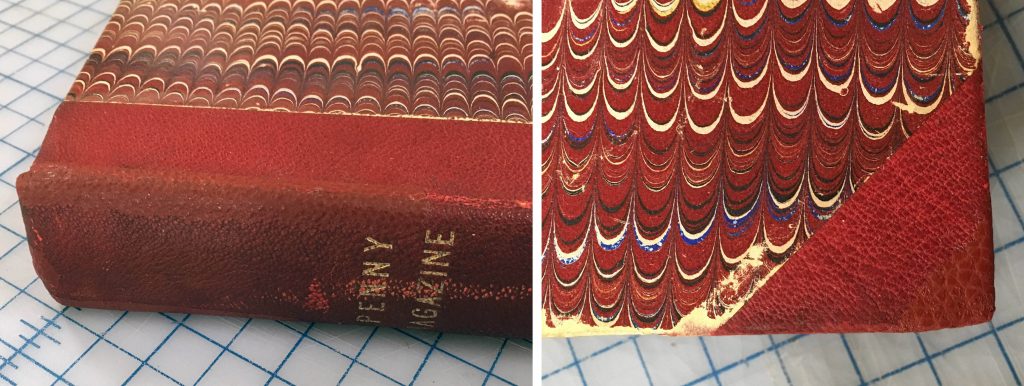While we are always trying to maintain an awareness of new techniques and materials for conservation through the literature, sometimes it can take a while to experiment and actually put them to use. Recently, I have finally gotten around to trying my hand at making and applying cast acrylic films for book repair; a technique which I had originally seen presented by Grace Owen-Weiss and Sarah Reidell at the Library Collections Conservation Discussion Group of AIC back in 2010 (See the Book and Paper Group Annual Vol 29, p. 92). Using a silicone mold, a blend of acrylic gels, and a paper or textile support, one can employ this technique to create a thin, reversible repair material that matches both the color and texture of the object.

This bound serial came into the lab several months ago, exhibiting some splitting of the leather at the joints and corners. Luckily the boards were still firmly attached, so it just needed some minor, stabilizing repairs to reduce the potential for further damage or loss. There is a lot of variation in the color of the red leather, either from light damage (evident on the marbled paper on the back board), pollution, or handling, which gave me the opportunity to make several different samples of film to match the various colors.
 Bookbinding leathers come in such a variety of grains and surface textures, so I started by making a silicone mold with two different grains. The brown leather on the left is a piece of goatskin from Harmatan, while the black piece on the right is actually fake leather from an old backpack. These were adhered to a piece of davey board, placed in the bottom of a bristol board tray, and then the 2-part mold material was poured over the top.
Bookbinding leathers come in such a variety of grains and surface textures, so I started by making a silicone mold with two different grains. The brown leather on the left is a piece of goatskin from Harmatan, while the black piece on the right is actually fake leather from an old backpack. These were adhered to a piece of davey board, placed in the bottom of a bristol board tray, and then the 2-part mold material was poured over the top.
Interestingly enough, the fake leather grain was a better match for this book. After applying the acrylic mixture to the mold, a thin Japanese paper support is applied on top. After drying, the film can be peeled away from the mold. Sarah Reidell has a really wonderful bibliography on her website, where you can find step-by-step instructions for creating the acrylic films, so I won’t go into more detail here.

This technique produces a repair material that is quick and easy to apply, but visually blends much better than a toned Japanese paper repair. There are so many opportunities for experimentation using this technique, with the support materials, the application methods of the acrylics, and textures of the molds. I’m very excited to add this to our stable of techniques that we can employ here in the lab.


